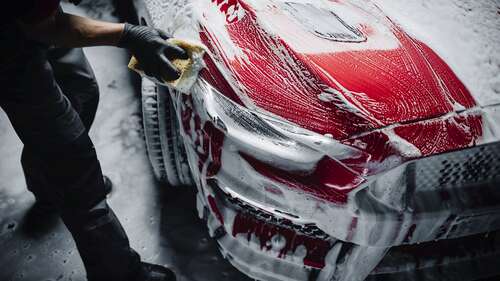
Depending on the paint condition, there are three or four steps to remove hard water spots: Washing, clay bar, polishing, and waxing. Treating the paint with a clay bar is necessary if the surface feels rough after washing. Meanwhile, waxing seals the finish and helps protect against future water spot damage.
The first step is to wash the entire vehicle with water (preferably “soft” water treated with softeners or reverse osmosis) and a high quality car shampoo. If you have a foaming machine, covering the vehicle with foam and allowing the soapy mixture to dwell for a minute or two will help dissolve most water spots.
Wash each section using a wash mitt and rinse with clean water, ensuring there are no traces of foam or soap left on the paint. Grab a dry microfiber cloth and wipe each panel dry. At this point, take a few moments to check the remaining water spots on the paint. Moreover, it’s the perfect time to check the surface for excessive roughness.
Clean paint should be as smooth as glass. If you gently rub your bare palm on the paint and the surface feels overly rough, consider decontaminating with a clay bar before polishing. When used right, a clay bar could remove hard minerals embedded in the clear coat while ridding the paint of other deep-seated debris.

